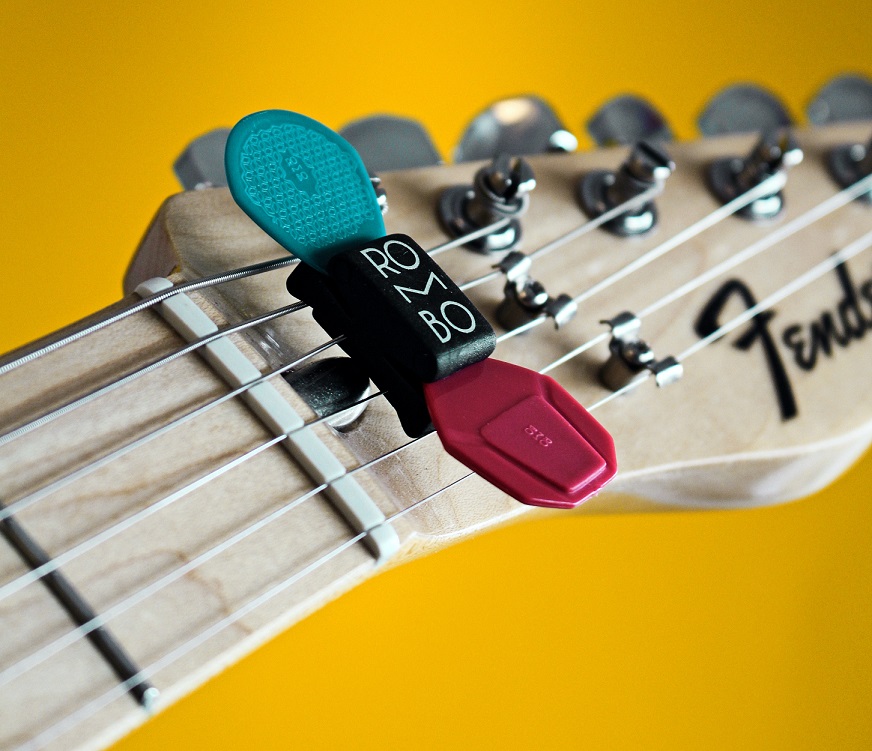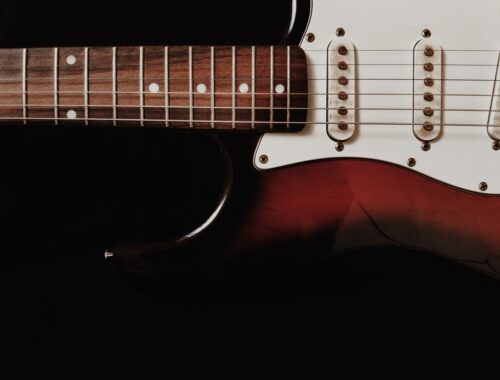
Use A Guitar Tuner
What Is a Guitar Tuner?
A guitar tuner is a device used to measure and adjust the pitch of the strings on a guitar. The most common type of tuner is an electronic tuner, which uses a built-in microphone or pickup to detect the sound of each string and display whether the note is sharp, flat, or in tune on a digital display. Some guitar tuners also have the ability to automatically detect the string being played and display the corresponding note name. Other types of tuners include tuning forks, pitch pipes, and smartphone apps that use the device’s microphone to detect the pitch of the strings. Tuning a guitar is an essential part of playing it in tune and is necessary for any performance or recording.
In addition to electronic tuners, there are other types of guitar tuners that can be used. One such device is the tuning fork, which is a small, metal, fork-shaped tool that vibrates at a specific frequency when struck. The musician can then use this frequency as a reference point to tune their guitar by ear. Another type of tuner is the pitch pipe, which is a small, cylindrical instrument that produces a specific pitch when blown into. The musician can use the pitch produced by the pitch pipe as a reference point to tune their guitar by ear.
There are also various smartphone apps that can be used as guitar tuners. These apps use the device’s microphone to detect the pitch of the strings and display whether each string is in tune or not. Some of these apps also have additional features, such as the ability to save custom tuning settings or to display chord diagrams.
Regardless of the type of tuner used, it is important for a guitarist to regularly tune their instrument in order to play in tune and produce a pleasing sound. A guitar that is out of tune can sound dissonant and be unpleasant to listen to, while a guitar that is properly tuned can produce beautiful, harmonious music.
How To Use A Guitar Tuner?
Using a guitar tuner is a straightforward process. Here are some general steps to follow:
- Connect your electronic tuner to your guitar, if applicable. Some electronic tuners have a built-in microphone, while others require a pickup or direct connection to the guitar’s input jack.
- Turn on the tuner and select the appropriate mode. Most tuners have different modes for different types of instruments, so make sure you select the guitar mode.
- Play the open string. Pluck the string gently and let it ring out.
- Observe the tuner display. The display will show the note that the string is currently producing and whether it is sharp, flat, or in tune.
- Adjust the tuning pegs. If the display shows that the string is not in tune, turn the corresponding tuning peg to adjust the tension on the string. Turn the peg clockwise to raise the pitch and counter-clockwise to lower the pitch.
- Repeat steps 3-5 for each string. Make sure to tune each string in the correct order: E, A, D, G, B, E.
- Check the tuning. Once you have tuned all of the strings, play a chord or a few notes to check that the guitar is in tune. If any strings still sound off, go back and adjust them as needed.
If you are using a different type of tuner, such as a tuning fork or pitch pipe, the process will be slightly different. With a tuning fork, you will strike the fork and place it on the body of the guitar to feel the vibrations and tune the string accordingly. With a pitch pipe, you will blow into the pipe to produce the pitch and then tune the string to match that pitch. Regardless of the type of tuner used, it is important to tune your guitar regularly to keep it sounding its best.
Here are some additional tips for using a guitar tuner effectively:
- Before you begin tuning, make sure that your guitar is properly set up and in good condition. If your guitar has intonation problems, worn strings, or other issues, it may be difficult to tune accurately.
- When using an electronic tuner, make sure that the tuner is picking up the sound of the guitar accurately. If you are having trouble getting a good reading, try adjusting the position of the tuner or the guitar.
- Be patient and take your time when tuning. It may take a bit of practice to get the hang of using a tuner, especially if you are new to playing guitar.
- Once you have tuned your guitar, it’s a good idea to play a few chords or songs to make sure everything sounds in tune. If something still sounds off, go back and double-check your tuning.
- Consider investing in a high-quality tuner if you plan on playing guitar regularly. While there are many inexpensive tuners available, a higher-end model may provide more accurate readings and be more durable in the long run.
Remember that tuning your guitar is an essential part of playing it well. With a little practice and patience, you can use a guitar tuner to keep your instrument sounding great and playing in tune.

Practice Regularly

Use A Metronome
You May Also Like

Experiment With Different Chords And Scales: A Guide To Improving Your Music
April 22, 2023
Play With Other Musicians
April 23, 2023